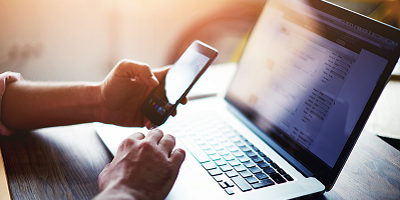You may have had a return-to-office date circled on the calendar for months, and now it's imminent or already here.
You might be excited. You might be dreading it. All thoughts and emotions around in-person office work are understandable, given that we've spent more than a year in a predominantly virtual environment.
But with vaccination availability and a return to pre-pandemic routines for many, some companies have called for workers to return to the office. While some of your clients and colleagues may prefer to continue meeting virtually, many see the value of meeting in-person and may be eager to sit down face-to-face without having to worry about virtual backgrounds or mute buttons.
Whether you're eager or apprehensive about spending your days in the office again, thinking through the details of returning to the office can help you make a smoother transition.
Understand your company's model
Will your company return to in-person work full-time or adopt a hybrid model? Several large organizations, such as Apple and Google, have decided that their workers will split their time between working at home and working in the office.
The decision is driven, in part, by productivity. Some workers are simply more productive at home. Others need the routine of the office. A hybrid model allows for both.
If your team decides to adopt a hybrid model, consider the structure of a hybrid schedule. Will it be one where you alternate in-office days with other staff so that someone is always in the office? If so, how will you communicate schedules and make sure clients understand when representatives are available for in-person meetings? This is a key consideration for financial professionals. Because with every decision you make, it's always important to see it through your clients' eyes, to make sure you can continue to serve them in the best way possible.
Another hybrid option is a shortened in-office workweek of Tuesday through Thursday (futurist Amy Webb predicts this may become a trend). Consider how a schedule like this might affect your business and your clients.
Acknowledge apprehension
Re-entry anxiety is normal, whether it's social anxiety (having to interact in-person with people again) or anxiety about your health.
You can deal with anxiety about getting sick by making sure best practices for safety are in place. (The CDC's regularly updates their guidelines for workplaces.) For example, protocols like the availability of hand sanitizer and frequent disinfection of common spaces can help. You can also take simple social distancing measures, like limiting the number of meeting attendees and blocking off chairs in a conference room.
Whether or not your company requires employees to wear masks is another factor. It can be challenging to keep up with the latest thinking about mask-wearing for vaccinated individuals. You also need to think through if you will ask clients who meet in person to wear masks, and what signage you will put on the door about wearing masks.
When it comes to the social aspects of returning to the office, you may need to do some mental preparation. Susan Albers, a Cleveland Clinic psychologist, suggests that you think about scenarios you might face in the office and think through how you might deal with them. As silly as it might sound, it will take some time to put yourself mentally back in the space of having colleagues and associates around you again.
If the looming start date is causing unease, do a trial run or a mini re-orientation, Albers advises. That could look like heading into the office and spending time sitting at your desk, remembering the familiar patterns. Bring some cleaning supplies with you, and maybe a plant, too — plants have been shown to help people feel less stressed.
Reintroduce old routines
Returning to the office is not unlike the transition children must make when it's time to go back to school after a summer of being home. What do we do to help kids adjust? We have them start going to bed earlier and waking up earlier in the weeks leading up to the first day. We make lists. We think about schedules. We make sure they have the right things to wear. We prepare the night before so that they have everything they need in the morning.
Some of these same tactics can be helpful for adults who have been working from home for more than a year, perhaps with a slightly different schedule and no commute at all. Mentally and logistically preparing for your return to the office can make those first weeks smoother.
Continue to be flexible
Working during a pandemic has taught us nothing if not how to be more flexible. Even now, guidance from health authorities sometimes shifts as trends emerge or we learn more. Whatever plan you've made for returning to the office, make sure you have some flexibility built in.
Think of it this way: You know how to pivot to virtual work and continue to deliver for your clients. You may even be an expert at using technology now. Embrace flexibility to retain that knowledge and bring those skills into the workplace. Have confidence that you can handle adversity and the unexpected. After all, you've already done it.
SM.2986573.08.21





 To exercise your privacy choices,
To exercise your privacy choices,